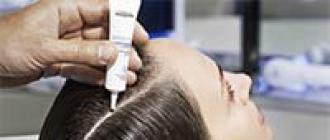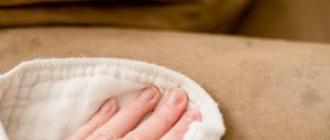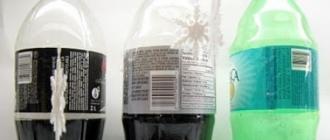Types of baby water
Water for children is the highest quality water today, if it is made by the manufacturer in accordance with all the rules.
Baby water is divided into two types:
- Please note that it cannot be used to prepare baby food, due to the fact that its composition is clearly balanced, so additional trace elements and minerals can upset the balance, making it unhealthy for the baby's health. The optimal composition of minerals in drinking water is 200-300 mg/l.
- This type of water is softer than for drinking, it contains fewer trace elements and minerals - 64-107 mg / l.
Alena Paretskaya, pediatrician, consultant on pregnancy and childbirth, breastfeeding and child nutrition:“Children should not drink mineral water that adults drink - its composition is not suitable for a delicate body due to its high mineralization. In high-quality drinking water for children, of course, there should be no heavy metals and other unacceptable impurities.
Please note that small children should not drink sparkling water until at least 3 years old! Ideally, drinking sparkling water should appear in a child's diet starting at age 5-7."
Children's drinking water. Rules for a successful purchase
When buying water for children, pay attention to the label:
- The name of the water must contain the word "children's".
- The label of the product must indicate that the water is artesian (natural, natural), and the data of the well (number and city) are posted.
- Please note that water of different composition is suitable for children of different ages. Usually on the label, manufacturers indicate the age at which it is recommended to drink this water. If this item is not listed, please refrain from buying.
- The ideal composition of minerals and trace elements in water for children is from 200 to 300 mg / l., The maximum allowable bar is 400-500 mg / l.
- Silver is not allowed as part of baby water, as it is a preservative.
- Indicators of the mineral composition of children's water must comply with general standards: potassium - 5-20 mg per 1 liter; calcium -< 60 мг на 1 литр; магний - 10-35 мг на 1 литр; натрий - < 20 мг на 1 литр; фторид-ион - < 0,920 мг на 1 литр; хлориды - < 150 мг на 1 литр; йодид-ион - 40-60 мкг/л; сульфаты - < 150 мг на 1 литр
- Water hardness should be in the range of 1.5 - 7 mg-eq / l.
- Alkalinity of children's water - no more than 5 mg-eq / l.
- Make sure that the water in the bottle is clean, clear, free of impurities and sediment.
- Do not buy medical and treatment-and-prophylactic water for your child: it exceeds the indicators of mineral salts.
- You can check if the water is registered in the register of Rospotrebnadzor on the website fp.crc.ru.
- The shelf life of children's drinking water is from 3 to 18 months.
- The label indicates the storage conditions for baby water, which must be strictly followed. If you open a bottle of water, it can be used within three days, after this period it is better to boil the water.
For more information on drinking water requirements, see San Ping No. 2.1.4.1116-02.
Store shelf example
Children's drinking water AGUSHA "Green Valley", 1.5 l
Drinking natural water "Green Valley" for children (the label says "From 0 months"). Artesian, the highest category, non-carbonated. Well No. GVK-45214039, located in Zelenograd.
Expiration date: 12 months. Store at +4°C to +25°C and 85% relative humidity, away from direct sunlight. The period of use of water without boiling after opening the bottle is no more than 3 days at a temperature of + 4 ° C with a closed lid.
Composition of the product:
General mineralization - 200-500 mg / l
General hardness - 1.5-7.0 mg-eq / l
Cations, mg/l:
Calcium - 25-60
Magnesium - 5-50
Anions, mg/l:
Bicarbonates - 30-300
Sulphates - no more than 100
Fluorides - 0.6-1.0
Certificate of state Registration No.RU.77.99.15.006.Е.005974.03.12 dated March 29, 2012
Children's water is a special category, it is used to refer to water of low salinity that has undergone repeated purification. Water is introduced into the diet, starting from 4 months with breastfeeding, and when transferring to a mixture - from the first days of life. Children's mineral water should be not only clean, but also healthy, so the water is enriched with a set of trace elements. Baby water is divided into two main categories:
- Drinking water. The amount of minerals is 200-300 mg / l, it can only be used for drinking, but not for preparing mixtures or cereals - otherwise an excess of minerals can upset the balance in nutrition.
- Mixing water. The mineralization rate is 64-107 mg / l, this is the mildest type.
Criterias of choice:
Chemical composition. Carbonated water is not used in baby food, hardness should be no more than 7 mg-eq / l. Alkalinity does not exceed 5 mg-eq/l. Water is drawn from artesian wells, after which it is filtered, this eliminates the presence of excess salts.
Water marking. Each manufacturer indicates the word "Children's" on the label, in addition, the purpose of this type of water and the age from which it must be introduced into the diet are written on it.
Package. You can buy water in containers from 0.33 to 5 liters. It is recommended not to store an open bottle of baby water for more than a day, even in the refrigerator, so for small children it is preferable to choose small containers.
Babies need to be given water. It saturates the body with trace elements that contribute to the development of organs and bone tissues. However, their digestive system is ready to accept only specially purified water. Bottled prepared liquid can be drunk and used to prepare complementary foods. What kind of water is better to give to an infant so as not to cause colic, experts from the Daughters and Sons online store will advise.
What kind of water can be given to a newborn baby


For babies, it is recommended to choose a drink with a balanced mineral composition. Water for newborns should not contain sugar and an increased concentration of sodium salts. It is good if the product contains potassium, calcium, sulfates and fluorine. These components stimulate tissue growth and stabilize the microflora of the stomach.
Newborns are not allowed to drink sparkling water. This can lead to an imbalance in the intestines, severe bloating and painful colic. An increased concentration of sodium salts adversely affects the kidneys and disrupts the water-salt balance in the baby's body. Therefore, pediatricians recommend choosing a drink with a low level of salt.
Modern manufacturers offer a huge range of products. To determine which water is better for children, you should carefully read the label, which says what microelements the liquid contains, how it is purified and other information.
| Brand | Peculiarities | Purpose |
|---|---|---|
| "Grandma's basket" | Salt conditioned. They are offered in eco containers of 0.5, 1.5 and 5 liters. | To quench your thirst. For soups, mixtures and porridges. |
| "Grow Big" | Contains potassium, sulfate, fluorine, magnesium and calcium. Bottled. | No need to boil. For the preparation of any baby food. |
| Fleur Alpine | From an artesian spring of the highest category. Saturated with oxygen. 100% antibacterial treatment. | To saturate the child's body with oxygen and minerals. |
| "Nutrilak" | Reduced salt concentration. It undergoes multi-stage bactericidal cleaning with active oxygen. | With an imbalance or lack of minerals in the body. Applied in complementary foods of any kind. |
| Humana | Enriched with calcium, magnesium and carbon dioxide. You may not boil. | To dilute the mixture. Gives a neutral taste. |
Important!
Pediatricians recommend giving babies water, the quality of which is approved by the Russian Ministry of Health. For example, the brand "Grow big" is referred to such manufacturers. This is healthy and tasty water.
Expert opinion
It is dangerous to give boiled water from a tap or from a pump room to infants. In addition, in the process of boiling, the liquid loses many trace elements necessary for a growing organism. For newborns, we recommend buying artesian purified water with balanced mineralization, without gas and sugar.
Specialist of the online store "Daughters and Sons"
Ekaterina Antonova
conclusions
What kind of water to order home for children, parents decide. Quality products are represented by many manufacturers who specialize in baby food and water. They offer a drink that is absolutely safe for babies, with a complex of useful elements. Water is extracted from artesian springs, purified and mineralized in accordance with the needs of the baby.
All parents want their children to be healthy, and the basis of health is proper nutrition and clean, wholesome water to drink. However, this is absolutely not the water that flows from our tap, it is not suitable for a child to drink. In addition, not every water that is sold on the shelves of a supermarket can be suitable for drinking a child and preparing food for him. Although water manufacturers assure consumers that their product is clean and healthy, but water for children has a special composition and high quality requirements, which significantly distinguish it from ordinary, drinking tap water sold in bottles. What are the requirements for baby water and do all manufacturers meet them? Will tell MedAboutMe.
For a breastfed baby, an additional amount of fluid is needed as complementary foods are introduced, that is, closer to six months. But children receiving artificial formula need additional fluid from the first days of life. Also, supplementing children with water is necessary in extreme heat to prevent dehydration and with the development of fever, diarrhea or vomiting, to replenish fluid losses. On average, young children need from 30 to 100-150 ml of liquid per day, depending on external conditions and characteristics of the body. After six months, fluid needs gradually increase, by the age of two, a child needs to consume about a liter of water per day, this is without taking into account other liquids (soups, juices, fruits). The more active children are, the more they sweat, the more fluid they need to consume to meet all their fluid needs.
In childhood, we were given ordinary boiled water to drink due to the fact that there were simply no other options. This is still considered by many to be the best option, although numerous studies have shown that such water is of little use. Children should receive special drinking water, which has strictly specified indicators. Tap water, even after boiling, does not even come close to them.

For children's water, which is offered to children for drinking, there are strictly prescribed standards - these are the requirements of SanPiN 2.1.4.1116-02. A careful study of this regulatory act, we can conclude that the water for drinking children is very different from the drinking water of the "adult" type, due to the fact that the needs of the child's body are different.
The first is the total amount of minerals, which has certain concentrations that do not exceed 250-400 mg / l. It is important not only their total number, but also the content of individual elements that give water certain properties - these are potassium, calcium, iodine and fluorine ions, magnesium. In children's water, the presence of carbohydrate dioxide and silver ions is generally unacceptable, they can negatively affect the health of children.
Water for children must receive a special certificate of state registration with the bodies of Rospotrebnadzor, as well as a special declaration that it meets all the requirements of the technical regulations in the Customs Union. Based on all the requirements for baby water, it can be divided into two categories:
- Water for children to drink;
- Water for formula and baby food.
The composition of these two liquids is different and drinking water is not recommended for dilution and mixing, it contains more additional minerals that can interfere with the composition of mixtures. In water for drinking children, there are about 300 mg of minerals, and in water for mixtures, only 70-100 ml, due to this difference, the purpose of liquids is different.

Ideally, water for children should be obtained from an artesian well deep underground in a region with favorable ecology. In addition, before bottling, it must go through many stages of cleaning. However, it is worth considering whether we have many such regions and compare their number with the volume of production and sale of “children's water”. Many of the water producers draw beautiful landscapes, mountains and lakes on the labels, but for verification, a careful study of the label makes it clear that the water was taken from the tap and passed through the filtration system. It makes no sense to buy such water for children, and for a lot of money, it’s cheaper to buy a good water filter.
It is strictly forbidden to give children water from open sources (springs, wells, wells), even if you are assured that these are the cleanest places and water is famous throughout the district. Not only biological objects (microbes, viruses, helminth eggs) can penetrate into the water of such springs and sources, but also various dangerous substances - nitrates, toxins and heavy metals.
Tap water is not suitable for small children to drink, even boiled. It is chlorinated for disinfection and after boiling, some of the chlorine still remains in it. This substance is harmful in itself, and can also react with special compounds that enter the water, which negatively affects children's immunity. There are few useful substances in such water, and most of them are lost during the boiling process. But what then to drink to children?

Not so long ago, a special society for the protection of consumer rights (Roskontrol) conducted examinations of several of the most popular brands of children's water at once. They revealed violations of the microbial level - the water "Bebi", "Snezhskaya Malyutka" and "Fairytale Forest" did not pass the test. Although these microbes cannot be classified as particularly dangerous, the indicators of this water have gone beyond the standards, and it cannot be called completely safe and useful.
Further, the same water samples were tested for the content of hazardous organic substances. In “Bebi” water, nitrates were at the limit of the norm, the amount of ammonia and ammonium ions exceeded the norm, and “Vinni” children's water also excelled in these indicators.
According to the indicators of usefulness, the water “Hipp”, “Bebi” and “Pearl of Baikal” did not reach the norm, the concentrations of potassium and fluorine are violated in them. In the composition of the water "Agusha" and "Fairy Forest" silver ions were identified, which should not be in the composition of children's water. Their concentrations are low, but regular consumption of such water can lead to its accumulation in the body.
As a result of the examination, three brands were recognized as the safest children's waters - Frutonyanya, Malyshka and Agusha, the last two with some comments and repeated studies after recommendations were sent to the manufacturer to strengthen quality control.
Based on the results of the check, it was found that even the “children's” marking on the label does not guarantee the quality and safety of water. Only one sample out of nine tested received no complaints. The rest had at least minimal, but claims. However, large manufacturers took into account these examinations and carried out internal quality control and corrected the shortcomings. Therefore, when choosing water for children, be guided by the composition on the label, as well as the results of examinations. If there are doubts about the quality of water, ask for quality certificates and expert opinions.
On the shelves of stores now there is a huge amount of products specifically for babies, including specialized children's water. How not to get confused and make the right choice?!
The design of a bottle with a cute baby or a cute and fluffy bunny does not give us a guarantee that the water is intended for consumption by children. Hiding behind a beautiful design, the manufacturer deceives parents by offering ordinary adult water at a non-childish price. Even when studying the label (chemical composition and total mineralization), it becomes clear that in fact this liquid does not meet the required SanPin standards for children's water.
How to recognize: The label says only: “water of the first or highest category (underground or artesian source)”. In the worst case, the "central source of water supply."
There are children's waters of the highest category, corresponding to all the necessary parameters. However, you need to figure out how it is brought to the "ideal". Most likely, it was purified using membrane technology (reverse osmosis), and then brought to the level of physiologically complete mineral composition standards by the powder method (the necessary minerals were added). Those. first, all substances of natural origin were removed from the water and the powder was added in the required volume. But think for yourself how useful such water is ...
How to recognize: The label says: "water of the highest category (underground or artesian source) for children (for children, for baby food)"
Children's mineral water with a natural balanced mineral composition that does not need additional correction. The very word "mineral" in the name does not mean that there are many minerals, but that it was not purified and restored (this is prohibited by law), i.e. it is clean and meets all standards. Unfortunately, there are very few natural sources in the world, the water of which would comply with the technical regulations and SanPin standards. Since the culture of proper drinking is more developed in Europe, these waters are more often imported (Sulinka Baby, Sierra Cazorla ..).
How to recognize: The label says: “Natural drinking mineral water for children (for children, for baby food)”
"Children's water" ... what, really ?!
Water is the most important link in the biochemical processes of the child's body. The health and well-being of the child directly depends on its quality. Therefore, it is important for every parent to know how to choose baby water so as not to harm the baby.
On the shelves of baby food stores you can often find bottles or various packages with the inscription "Baby Water". Manufacturers actively advertise their product and recommend it to quench the thirst of kids. Being in a period of active growth and development, children usually drink a lot of water and, of course, every mother wants this water to be not only clean, but also safe for the child's health.
But not always a beautiful label and an inscription that children's water should be trusted. For many manufacturers, the appearance of a children's water line is just a marketing ploy. The bottle may contain water that does not meet the applicable standards, which makes its use hazardous to health!
How to choose water for your child?
Baby water (water for the preparation of baby food, with artificial feeding) is allowed to produce only the highest quality category or mineral water that meets the standards of the highest category. In addition, additional requirements are imposed on it: a higher balance of the composition, as well as the absence of preservatives such as carbon dioxide and silver.
Silver in baby water is not allowed! Instead of silver, ultraviolet rays or ozonation are used for bactericidal treatment of children's water. The presence of silver in water can be checked on the label - the element "Ag" (lat. Argentum - silver) should not be there at all, in any quantity.
The physiological usefulness of the macro- and microelement composition of packaged water is determined by its compliance with the standards SanPiN 2.1.4.1116-02
After studying the data in the table, you can independently calculate the waters that are not suitable for children. After all, a bottle with a pretty baby or a cute and fluffy bunny does not give us a guarantee that the water is intended for consumption by children. Hiding behind a beautiful design, the manufacturer deceives parents by offering ordinary adult water at a non-childish price. Even when studying the label (chemical composition and total mineralization), it becomes clear that in fact this liquid does not meet the required SanPin standards for children's water. If indicated only: water of the first or highest category.
Water of the highest category must be absolutely safe in terms of purity and physiologically complete in terms of micro- and macroelemental composition - all this is assumed by the strict standards of SanPin. But how is it possible to achieve such high standards, and how absolute will be the "safety" of such water?
So, artesian water is much cleaner than water from open sources (springs, wells), where it is protected from human impact, but at the same time it needs purification procedures to meet high standards of the highest quality category. And such cleaning can be (and most likely will be) reverse osmosis.
Water purified by membrane technology (reverse osmosis) has the lowest mineralization - 20-50 milligrams per liter (0.02-0.05 grams per liter), which makes the content of substances of natural origin quite scarce. Once in the body, such water will wash out beneficial trace elements. Therefore, minerals are already artificially added to purified water. Artificially mineralized water is less useful than natural drinking water. Everyone knows that it is impossible to get natural freshly squeezed juice from a soluble powder.
An analysis of the children's water market showed that in order for water to meet the highest category standards, many manufacturers resort to the use of membrane technologies. Of course, one cannot objectively consider such water harmful, but one cannot call it useful either.
During laboratory studies, silver ions were found in some waters. It used to be believed that silver purifies water, now it is known that silver, like all heavy metals, is toxic if it is ingested in excess. Fortunately, the concentrations of silver were negligible, but the fact that silver was present in the water alerted the experts, since it is forbidden to add it to children's water as a preservative.
Meeting children's waters of the highest category, corresponding to all the necessary parameters. It is worth understanding how it is brought to the "ideal". Most likely, it was purified using membrane technology (reverse osmosis), and then brought to the level of the standards of the physiological usefulness of the mineral composition (the necessary minerals were added). Those. first, all substances of natural origin were removed from the water and the powder was added in the required volume. But think for yourself how useful such water is ...
In order to buy good (healthy, high-quality) drinking water, it is important to know where it comes from and what technology it is used to purify, as well as what is included in its microelements. And it would be very good to understand about this composition - whether it is natural, or is it the fruit of modern technologies, i.e. powder mineralization.
Children's mineral water with a natural balanced mineral composition that does not need additional correction is the best option for use from birth. Natural drinking water not only quenches thirst, but also heals the body, improving metabolic processes. Unfortunately, there are not many natural sources whose water would comply with the technical regulations and SanPin standards. Since to a greater extent the culture of proper drinking is developed in Europe, these waters are often imported.

It should be noted that the problem of lack of water in the body - dehydration - is relevant at any age, but especially for babies. Dehydration is a serious threat to the metabolism and growth of all organs. Water helps the healthy and proper development and growth of the baby. To avoid such problems, it is worth forming the habit of drinking water from childhood.

Water, preserved in its original form, will be the key to the healthy development of your child, and contribute to the formation of the protective functions of the child's body.






